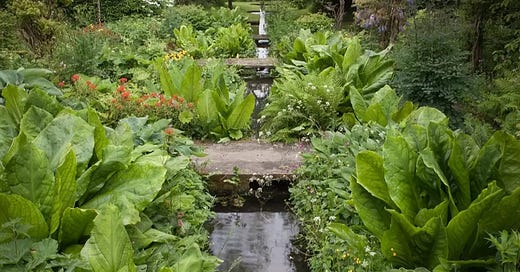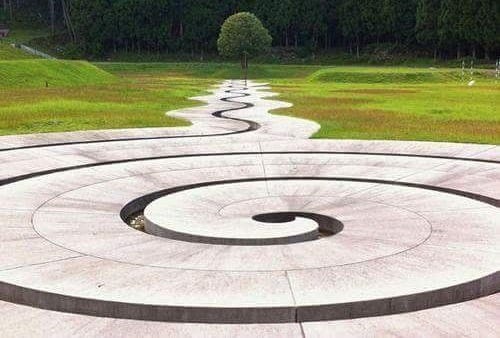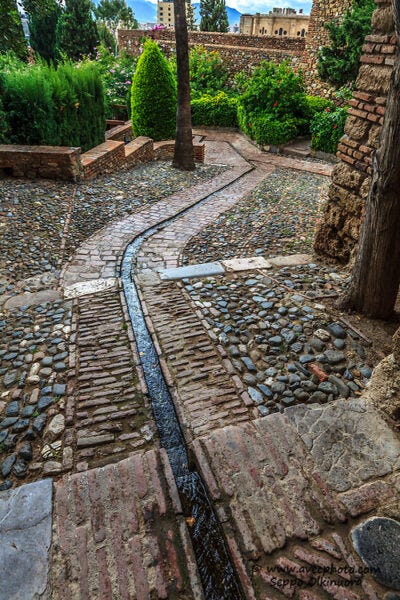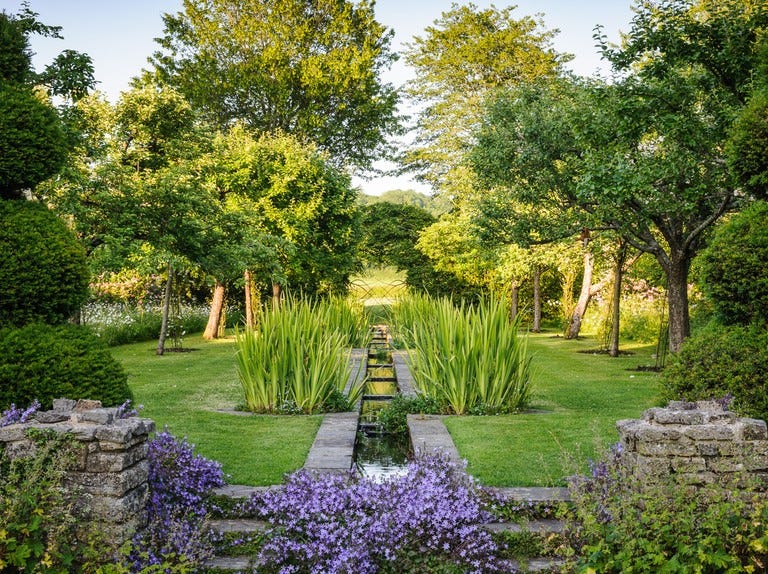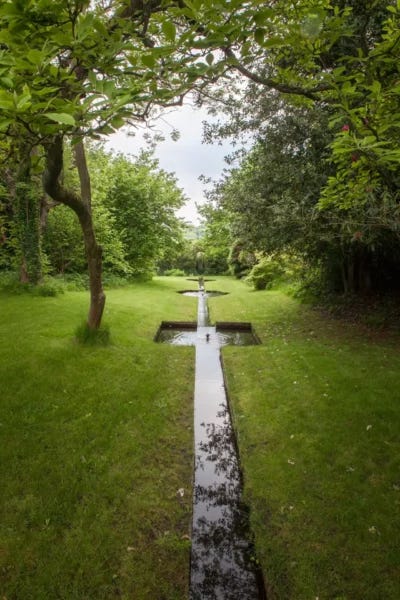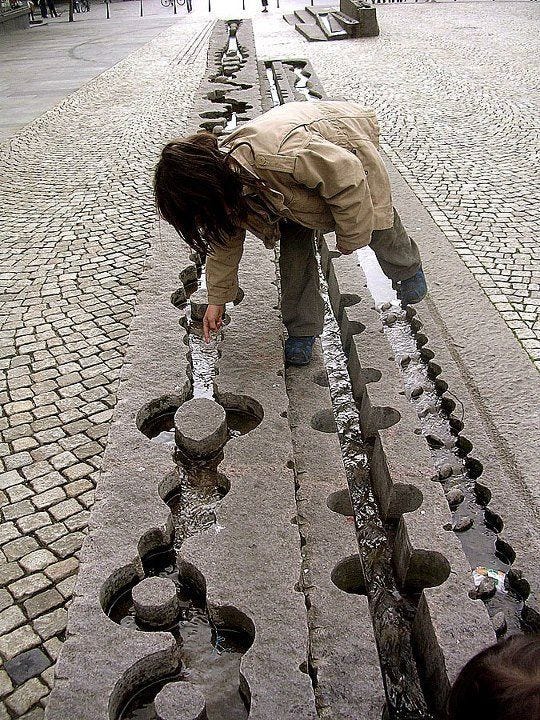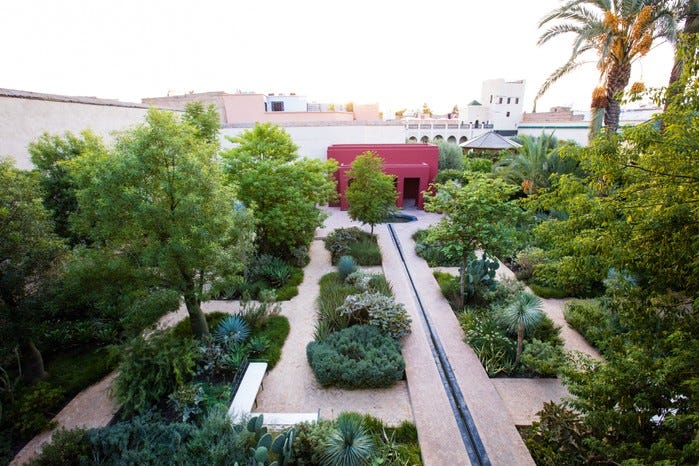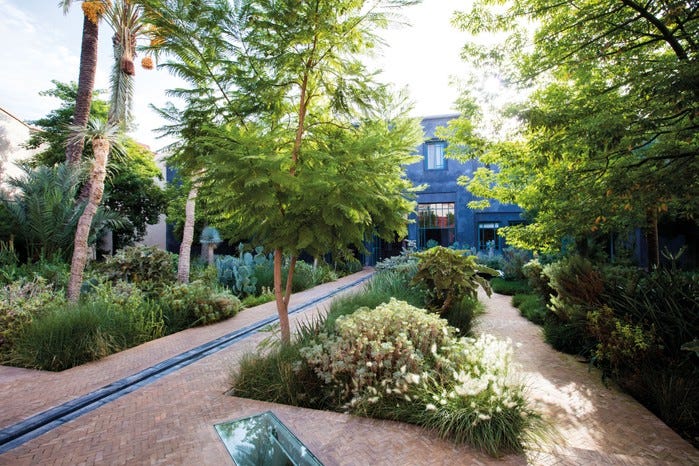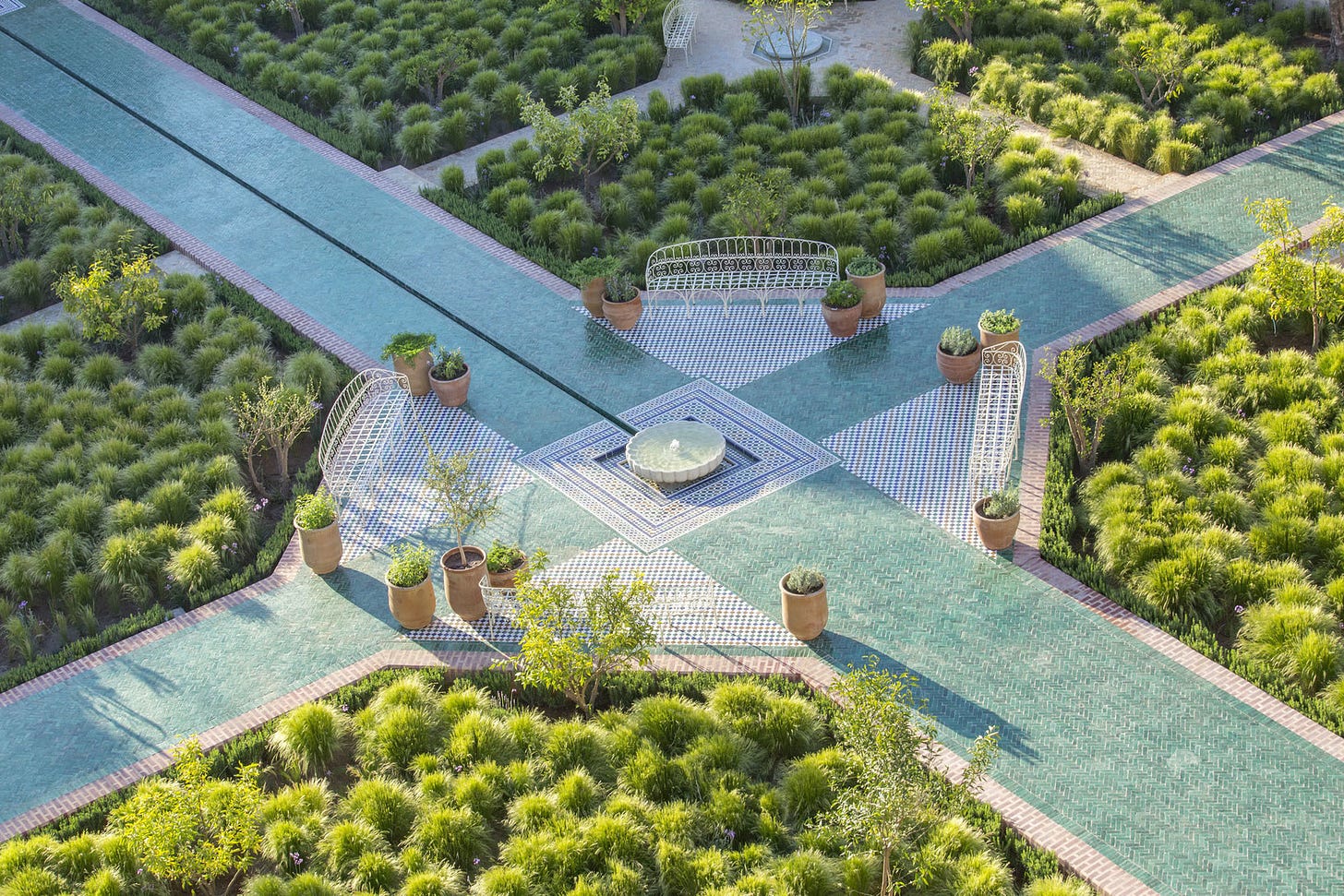For the Love of Water Rills
Water is used to express layers of meaning, it is simultaneously heavy and weightless, solid and transparent, light and dark' -Luciano Giubbilei (garden designer)
Water is a vital part of a fully functional garden, ie one that reaches its full potential on more than one level. It is a sensory experience, but water is also necessary to human, plant and animal life. It connects us to nature and has brought those that control it power and prosperity throughout history. Which is why water, and rills in particular, continue to have a storied history in great garden design.
According to Wikipedia, 'In hillslope geomorphology, a rill is a shallow channel (no more than a few tens of centimetres deep) cut into soil by the erosive action of flowing water. ... Artificial rills are channels constructed to carry a water supply from a distant water source.'
Ancient systems
On a trip to Morocco I was struck by the small channels that carry water through the countryside called, seguias. These small rivulets not only caught my attention, but made me want to follow them. I was instantly hooked.
What I witnessed was all part of an ancient and ingenious system of water transportation, conservation and control that was the key to the first human built societies and economies. Qanats are a subterranean system of tunnels that tap into the water table and transport liquid thousands of kilometres across the countryside. The tunnels are extended gradually by creating vertical shafts at regular intervals. These shafts provide access for debris to be brought to the surface, for maintenance and for water wells. In this way the water can be brought across vast distances by gravity alone, with only the shafts dotted across the landscape to show the waters route.
The tunnels eventually surface where the water is fed into the seguias that I saw, directed where needed and controlled through a system of water rights. Channels are made using whatever materials are available; hewn into rock, built with bricks or concrete or even carved directly into non-porous ground. Openings are left where needed to feed various offshoots. Whereby rocks or barriers can be removed in order to irrigate crops, fill reservoirs or feed oasis and then replaced when finished and/or to drain excess back into the main system. Plus the minimal surface area and shallow nature of the seguias help prevent evaporation while enhancing safety.
Called many names in many different cultures, Qanats, Galerias, Khettara, Falaj, Kanerjing, Karez or Foggara, this base system spread from the middle east via the silk road and Roman and Arab expansion across the arid world, from Asia to the Americas.
At some point the channels, necessary for irrigation in green spaces became decorative rills in gardens, the oldest of these being Paradise Gardens. Water is an essential element in such spaces, it represents purity, sustenance and vitality. It feeds the plants and wildlife, cleanses users and provides cool respite from arid surroundings. Water is often brought into the garden via a spring-like fountain and moved through the space by a system of rills. They are lively, functional and occasionally highly decorative, featuring colourful tile and detailed brickwork. They fill the gardens with movement, reflection and the dynamic rhythm of life.
The use of rills as a garden feature spread right along with the technology of the Qanat system. We see them popping up all along the way from renaissance Italy (Villa Lante) to the Morrish elegance of the Alhambra in Southern Spain. Ebbing their way through generations of garden trends.
20th Century
The turn of the 20th Century saw decorative water rills join the Arts and Crafts movement. As backlash against industrialization built, there was a call to uplift artisans and celebrate traditional craft skills. Naturally, water rills fit seamlessly into this trend. Many architects sought to make outdoor areas part of the greater design. And water rills became a trademark element in many gardens including several by Gertrude Jeckyll, Edwin Lutyens and even a few American designers like, Beatrix Farrand. They brought craftsmanship, wildlife and beauty into the space with all the elegance found in the pattern of a Macintosh wallpaper. This cemented rills in designers minds, proving that they could be used in any landscape, anywhere in the world.
Modern day
These days rills continue to be a safe, easy and inexpensive way to alter the perception of space in modern garden design. They manage to capture the imagination in a way that is unique when compared to a pond or fountain. Rills are linear and full of movement. When they connect and move water from one feature to another they immediately give a sense of the grander scale of an area and create a system of patterns that we can recognize our place in.
They show us the way by leading people through the space from one area to another. Not only with visual lines but with the flowing water itself. Viewers will actually move sync with it through the space, matching the speed of its flow. And enhanced further by the width and depth of the rills construction.
An open rill also invites curiosity, we want to feel the waters coolness on our finger tips and trace its route. In fact, there are several examples of rills being run along seating areas, table tops and in stair railings for even easier access.
Hard and geometric, arty and playful or calming and reflective, we want to experience it all. To become a part of something larger than ourselves and separate from our daily lives. This is where rills really shine, they provide a stand out moment for those visiting the space. They are something that sticks in your mind and memory.
Decorative rills are a tool that we can use In contemporary design to echo traditional forms (such as Le Jardin Secret, below, by Tom Stuart-Smith) or become something entirely new depending on the task that they're performing. The possibilities are limited only by the designers ingenuity, so why not explore the use of rills in your garden space?
- Sara-Jane & Alicia
Virens Studio is partnership of planting designers located in Vancouver, Canada. We love to celebrate ecology, urban greening and the best in horticultural practice. Don’t forget to drop in to say hi and follow us @virensstudio on instagram, we'd love to hear from you.

